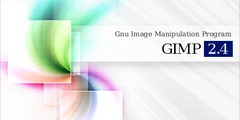On 08/03/2017 12:04 PM, Helmut Jarausch wrote:
Hi,
probably this is FAQ but I couldn't find an answer.
I have a light skirt of a person in foreground in front of a rather dark
background.
I have created a selection for the background (using GMIC select
foreground).
This selection is not feathered and clearly separates the foreground
from the background.
Now I want to blur the background. Unfortunately I get some 'halo'
around the foreground.
'Selective Gaussian Blur' performs better near the boundary of the
selection but it blurs
part of the background not enough.
If your foreground content is selected, isolating it from the background
with a layer mask is easy: Duplicate the layer, right click the new
layer in the Layers dialog, and select "Add layer mask." Then do Select
Invert, click on the mask thumbmail in the Layers dock, and drag and
drop black onto the image canvas. The new layer is now like a stencil:
The foreground is visible, the background transparent. (You could just
delete everything but the foreground from the layer, but using a mask
enables you to adjust the result if/as necessary by painting on the mask
with white (to restore visibility) or black (to make transparent.)
To prevent a 'halo' effect around the foreground object when blurring
the background layer, you can remove the foreground content from it
before blurring. Turn visibility of your new layer off, select the
layer below it in the Layers dock, and delete your selected foreground.
(If the "hole" is not transparent after deletion, undo that step, right
click the thumbnail in the Layers dock, do "Add alpha channel" and try
again.) Once your foreground content is a transparent hole in the
background layer, do Filters > Enhance > Heal selection. This will
invoke the resynthesizer plugin, and seamlessly replace the "hole" with
a generated pattern based on the surrounding image content. (If your
foreground is 'big' in terms of pixel count, this might take some time.)
Then turn your top layer's visibility back on, blur the layer under it,
and viola: No halo.
:o)











